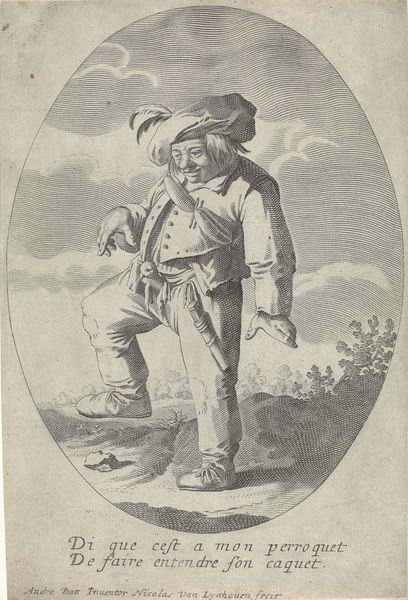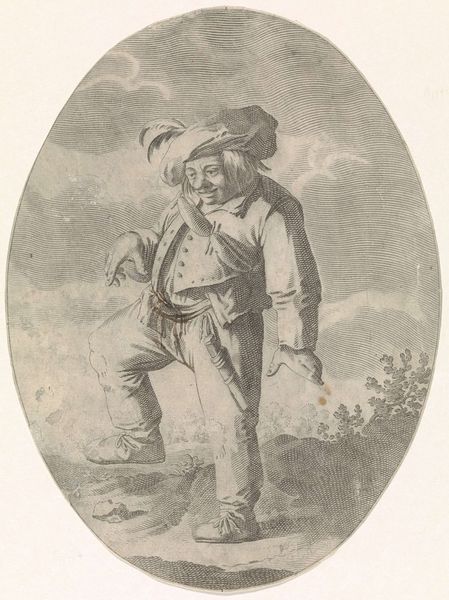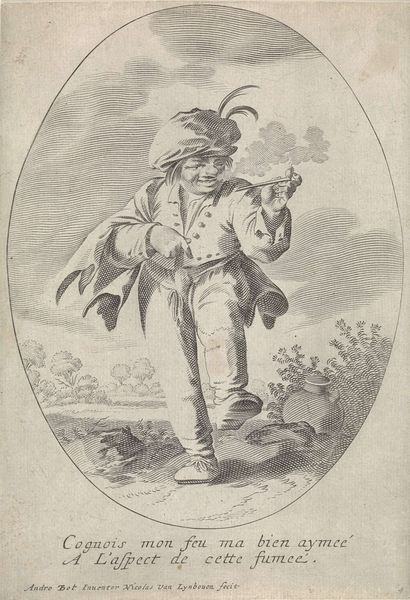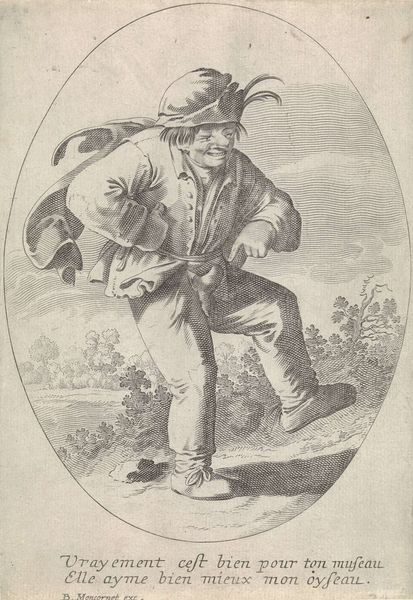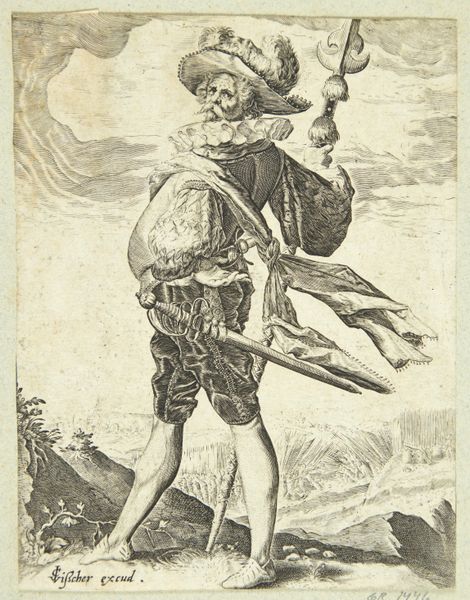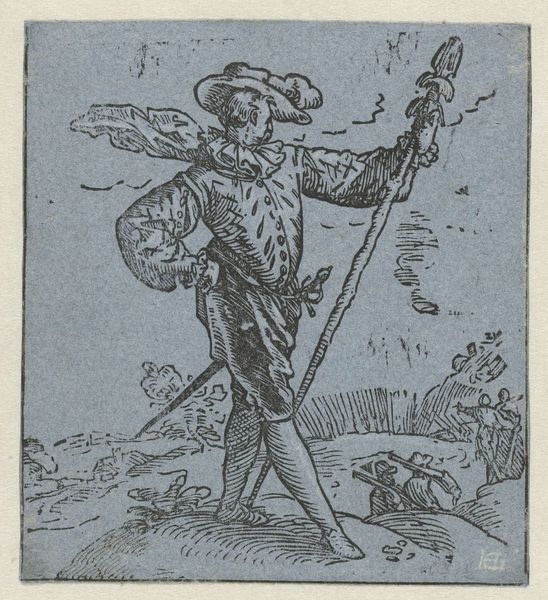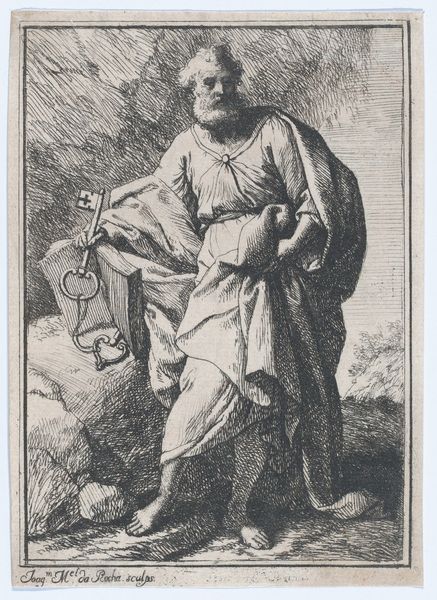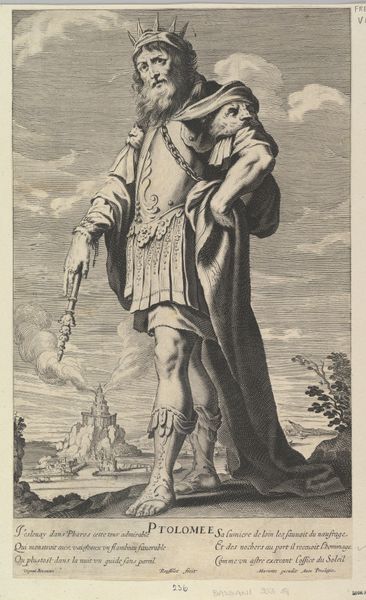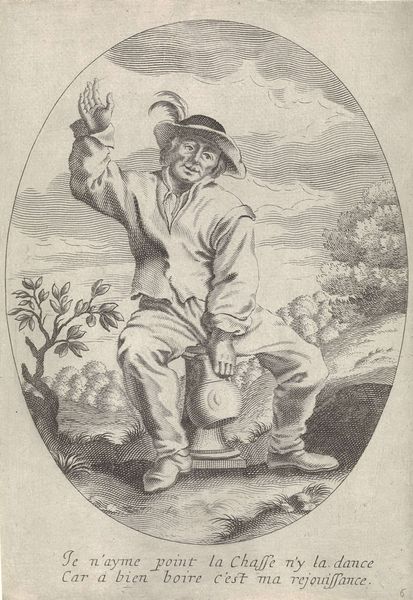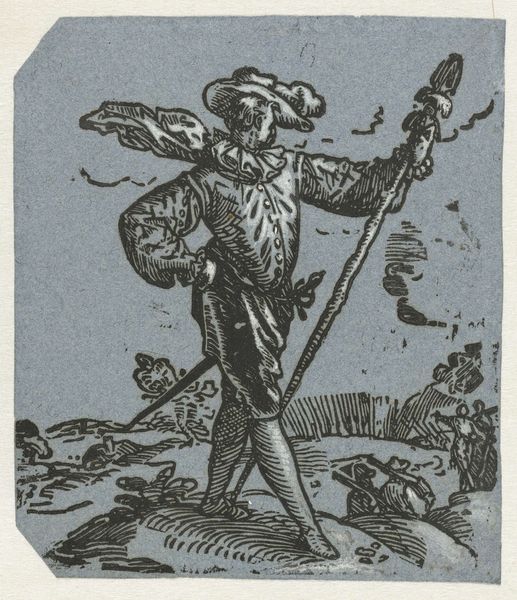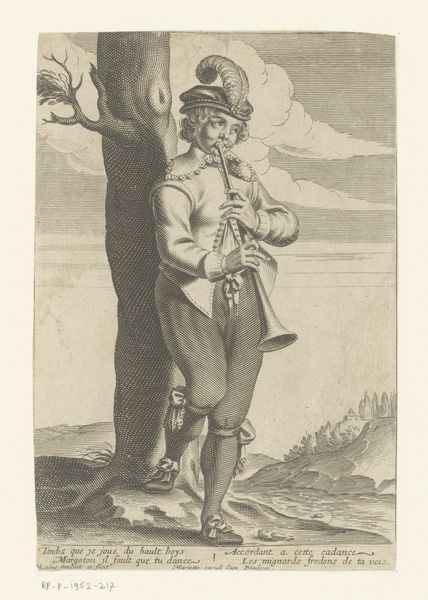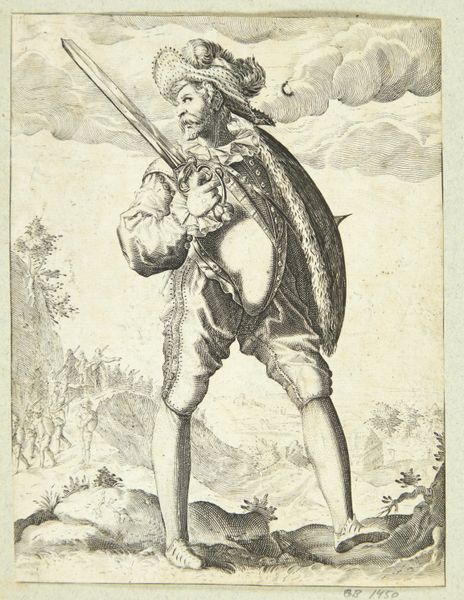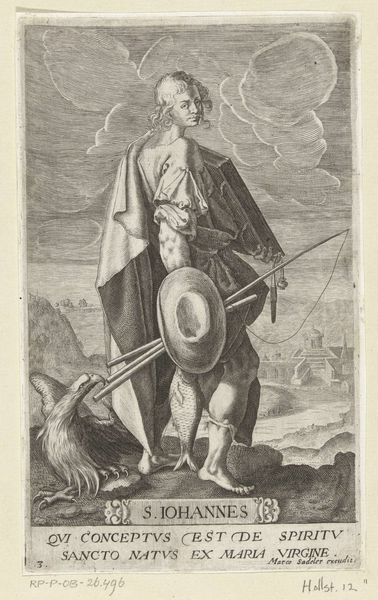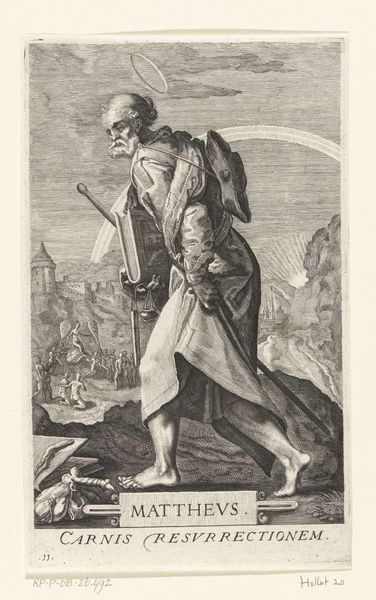
print, engraving
#
portrait
#
pencil drawn
#
baroque
#
dutch-golden-age
# print
#
pencil sketch
#
old engraving style
#
figuration
#
pencil drawing
#
line
#
sketchbook drawing
#
genre-painting
#
engraving
Dimensions: height 211 mm, width 142 mm
Copyright: Rijks Museum: Open Domain
Curator: So, we’re looking at "Dansende boer met een worst," or "Dancing Farmer with a Sausage," an engraving by Nicolaes van Lijnhoven, created sometime between 1622 and 1668. Editor: It’s… energetic. The figure practically leaps off the page, a whirlwind of implied movement. He looks mischievous, maybe even a little drunk, caught mid-revelry. Curator: It’s a prime example of Dutch Golden Age genre painting. Lijnhoven captures a scene of everyday life, elevating it to art. What's particularly interesting is how it reflects the burgeoning middle class and their self-representation. Editor: The "everyday" is definitely mediated. He’s got a rather ostentatious outfit, puffed sleeves, a feathered cap… Does this reflect reality, or project a specific image of rural life for an urban audience? And let's consider that sausage! Curator: Precisely! The sausage can be interpreted in different ways. Literally, of course, as a symbol of peasant life and their simple pleasures. But considering the context of the Dutch Republic’s growing wealth, it could also be seen as a symbol of prosperity and abundance. There is an interesting play on class representation happening here. Editor: It’s loaded with symbolism. It reminds me that the idea of the "simple life" is always complex, built on layers of socio-economic structures and unequal distribution of resources. He looks almost performative. Is this a celebration of peasant life, or a commentary on it? Curator: It’s a question that continues to engage scholars. Lijnhoven worked during a time of social upheaval, religious reformation, and expanding trade networks, and these forces shaped how the public viewed not just the wealthy, but also the laboring classes and themselves. He depicts them with warts and all, yet still captures a joyful spirit. It’s up to us to decide, I guess, if it’s condescending or celebrating. Editor: A tricky tightrope. The work does draw our attention to the complexities of identity and representation in a specific historical context. These images shape narratives, influence perceptions of who we are, and even tell us who we aspire to be. Curator: Indeed. Seeing this makes you question the dominant social and political narratives shaping representation then and now. Editor: I’ll be thinking about sausages, representation, and power long after this!
Comments
No comments
Be the first to comment and join the conversation on the ultimate creative platform.
